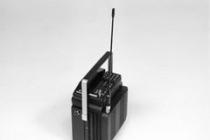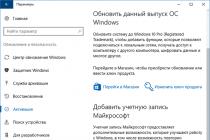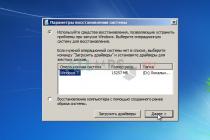Microsoft published the list of minimum system requirements for Windows 10 a year ago. As well as the recommended ones. The number of users of the new OS is increasing, so it would be quite appropriate to remind about this once again. Those who have already installed Windows 10 on their PC can compare their bright expectations with the commonplace. The system requirements for Windows 10 for PC and laptop are slightly different from those for smartphones. We will also touch on this point.
On the one hand, the recommended technical specifications The PCs with Windows 10 installed on them should be approximately the same as for the 8th version of this OS. On the other hand, there are some nuances that prevent the reader from referring to similar materials for the G8.
For example, it is assumed that Windows 10 will only be installed on machines equipped with an embedded crypto-processor with support for the latest Trusted Platform Module (TPM) technology. Cryptographic protection of devices under Windows control 10 will receive special attention. So, let's look at the standard system requirements for a computer and laptop running Windows tenth version.
Minimum for personal computers
To install Windows 10 on a desktop or laptop, the latter must meet the following system requirements:
- Volume random access memory> = 1 GB.
- CPU frequency> = 1GHz.
- The size hard disk> = 16 GB.
The requirements listed are for 32-bit Windows versions 10. For x64 they will be different:
- The amount of RAM> = 2 GB.
- CPU frequency> = 1GHz.
- Hard disk size> = 20 GB.
 The requirements for the size of the monitor in Windows 10 are quite modest - for normal operation, a screen with a size of 800 × 600 pixels is sufficient. The computer must support standard network interfaces such as Ethernet and / or Wi-Fi, as well as have a sufficiently powerful video card with support for the latest DirectX versions, since this library is still the focus of game developers for "vin". If we compare these indicators with those that were required for the G8, then we will not see any special differences. But experienced users, especially those who have already installed Windows 10 for themselves, recommend multiplying everything system requirements by two. That is why they are minimal in order to differ from the real ones.
The requirements for the size of the monitor in Windows 10 are quite modest - for normal operation, a screen with a size of 800 × 600 pixels is sufficient. The computer must support standard network interfaces such as Ethernet and / or Wi-Fi, as well as have a sufficiently powerful video card with support for the latest DirectX versions, since this library is still the focus of game developers for "vin". If we compare these indicators with those that were required for the G8, then we will not see any special differences. But experienced users, especially those who have already installed Windows 10 for themselves, recommend multiplying everything system requirements by two. That is why they are minimal in order to differ from the real ones.
Minimum for smartphones
Hardware requirements for smartphones are even more stringent. It is required, for example, that the screen resolution and the amount of RAM are in a certain ratio. Another, rather strange at first glance, wish concerns the size of the indent from the keypad to the screen and the outer edge of the device - it should be at least 4 mm.
 Let's take a closer look at the relationship between the screen resolution and the amount of RAM. For devices with small screens and a resolution of about 800 x 480 pixels, you can get by with 512 MB or more RAM. If you want to have a better picture, for example, with a resolution like 2560 x 2048 or more, then Windows 10 will require at least 4GB of RAM from you.
Let's take a closer look at the relationship between the screen resolution and the amount of RAM. For devices with small screens and a resolution of about 800 x 480 pixels, you can get by with 512 MB or more RAM. If you want to have a better picture, for example, with a resolution like 2560 x 2048 or more, then Windows 10 will require at least 4GB of RAM from you.
The upper limit of the diagonal length for smartphones running this OS is about 8 inches. These are the simple claims from Microsoft to the owners mobile devices... So, if you use a smartphone, then think ten times before choosing the “top ten”. Maybe it makes sense to do something simpler.
Processor and flash memory
Our further presentation also applies to mobile devices running Windows 10. Now we will touch on the minimum system requirements for a processor and flash memory for this axis.
Developers operating system it is stated that "ten" can be installed only on processors of a certain model and quality. This causes chagrin among the owners of not very high-quality equipment - after all, not having Qualcomm and Intel processors on board a computer can fantasize about installing Windows Mobile latest version- meaningless. The Microsoft website lists all valid rock models — eighteen in total.
 As for flash memory, there are also some nuances and limitations here. It is clear that the amount of such memory is limited from below by a not weak value - it means that the flash memory on a win mobile cannot be less than 4GB. The second condition is that 1GB must be reserved for the needs of the user and free. Storage performance requirements are as follows:
As for flash memory, there are also some nuances and limitations here. It is clear that the amount of such memory is limited from below by a not weak value - it means that the flash memory on a win mobile cannot be less than 4GB. The second condition is that 1GB must be reserved for the needs of the user and free. Storage performance requirements are as follows:
- IPOS> = 700 IOPS.
- The speed of sequential reading from the device is from 10 MB per second.
- For recording, the same parameter> = 6 MB per second.
But the presence or absence of a slot for an SD-card has nothing to do with the possibility of installing win mobile - there is no such requirement. The internet press claims that the original system parameters for "wines mobile" were expected to be even tougher. So we are, we can say, lucky.
We remind you that the transition to the top ten from previous versions: 7th and 8th - occurs free of charge if all necessary update packages are installed in the system.
The publication of data on the required minimum of hardware came out unexpectedly late - just a week before the release of the new OS on sale.
Microsoft has never been humane in its demands on PC hardware. Unlike Linux, which is installed on even the smallest computer, the system requirements for Windows 10 are quite high.
What determines the system requirements for Windows 10
First of all, they are influenced by the graphical shell and new features. 10 was developed in accordance with new developments in the field of software. All its capabilities are provided by high hardware performance.
Although a dozen is claimed to be a more economical operating system than 7 or 8, it is gradually overgrown with updates that consume more and more resources. All the new products announced in it require RAM, hard drive space and processor speed.
The announcer will speak too slowly, Cortana will be annoying with delays in command execution, and Movie Studio will constantly freeze if your computer is not at its best.
In general, you have to pay for everything. With only the minimum Windows 10 system requirements, you won't get high speeds and lightning fast work. Do not forget about additional programs that are inevitably installed on any PC.
Experienced users multiply the numbers by two. And judging by Microsoft's notes, that won't be enough. The system requirements for Windows 10 for a laptop are completely similar to those indicated for computers.
How to find out your system requirements for installing Windows 10
As far as your computer is suitable for installing 10-ki you can before starting it. The installer will analyze your hardware and tell you if you have enough resources.
You can find out some parameters in the system properties. Right-click on the This PC desktop icon and select the last item.

In the properties window, you will learn about the RAM and the processor.

The capacity of the hard drive can be found in the conductor. Right-click on the shortcut of the disk with the installed OS and select properties.

Look at the values.

To find out everything along with the video indicators, use the dxdiag utility. Press WIN + X and enter the command.

You will see absolutely everything in the window specifications your PC.

If your PC has normal settings for Windows 10, but the OS is still very slow and does not work correctly, you may have problems with the registry. Read and clean it up.
The relatively new Windows 10 operating system became available for download and installation in July 2015. It caused a lot of excitement at the time. There were massive discussions about the feasibility of its installation. The minimum requirements of Windows 10 in relation to computer systems, or more precisely, to hardware, do not look too high at all, which is to be expected.
What are the system requirements?
Before you start considering the system requirements of the Windows 10 operating system, you need to decide what is included in the concept of "system requirements". The simplest interpretation of this term Is a description containing the main components of a computer that may have certain parameters and characteristics to ensure the operation of the software environment, in this case the Windows 10 operating system. Windows 10 system requirements relate to the processor, RAM, video adapter, display, hard drive, etc. NS. This means that in this case we are talking directly about the filling, which is located inside a laptop, computer or tablet.
System capacity
When installing the latest operating systems from Microsoft, you should definitely take into account such a thing as system architecture. This concept is directly related to RAM and processor. Today, two types of architectures are distinguished: 32-bit (denoted x86) and 64-bit (denoted as x64). The difference between these two architectures is quite large. The main difference is that 32-bit systems support the installation of RAM modules, the volume of which does not exceed 4 GB. The system actually sees about 3 GB, and that is not always the case. For this reason, if you want to make the most of your RAM, then there is no point in installing the 32-bit version. Although the system itself is quite modern, it does not manage to squeeze everything out of the computer in terms of performance in any way.
File systems
If we consider the system requirements of the Windows 10 operating system, in no case can we ignore the concept of file systems. Today the most common types of file systems are FAT 32, NTFS and the newer ReFS. ExFAT is commonly used in mobile systems... In this matter, the main thing is that the FAT 32 system has a larger cluster size intended for small data. However, when accessing large files, the rotation of the hard disk slows down. When using ReFS or NTFS file systems, access to large files is much faster.
In this case, the speed of reading information from the sectors of the hard disk does not decrease. It is also necessary to take into account that there is a certain requirement for Windows installations 10. It lies in the fact that the 32-bit version of the operating system in file system You can install NTFS, but you won't be able to install a 64-bit system in FAT 32. You will have to format the partition or disk. By the way, the same requirement applies to the installation of other versions of operating systems. Windows systems below the tenth version.
Mandatory system requirements for Windows 10
It is known that initially the tenth version of Windows was available in the form of a Technical Preview. It was an upgrade of the existing operating system to version 10. Regardless of the general hardware configuration of the system, the requirements for the Windows 10 operating system were reduced to one prerequisite - the presence of installed service packs and service packs of the existing operating system. Thus, first it was necessary to install all uninstalled updates, and only then proceed to download and install the 10th version of the operating system. In addition, the update was only possible on systems starting from the eighth version. The XP and Vista operating systems did not support this upgrade.
Windows 10 minimum system requirements
The first version of the system was eventually withdrawn, instead of it there were standard versions of the Pro, Home, Enterprise type. The minimum requirements for any version of Windows 10 are pretty much the same. In this case, everything will depend only on the type of architecture you choose - x64 or x86. The minimum requirements for Windows 10 32-bit and 64-bit architecture are as follows.
There are no recommended settings in the tenth version of the Windows operating system. Initially, the system requirements for the computer were represented by the minimum configuration. Windows 10 can run smoothly even on outdated computer systems... However, in order to use the capabilities of the operating system to the maximum, it is still desirable to have hardware with higher characteristics. In particular, this applies to graphics chips and processors. The latest version of Direct X 12 must be supported. With processors, things are a little more complicated. Windows 10's system requirements for multi-core platforms usually don't matter much. The problem here is rather to use all the cores to optimize the work. This is already a topic for a separate conversation.
2. Additional system requirements
It is worth mentioning separately the specialized system requirements of the Windows 10 operating system. For the most part, they relate to the functioning of special services. Some of them may not be available in different versions, and some may only work in certain regions. For example, Cortana is only available in the UK, USA, China, and some European countries. To recognize speech commands, the user is recommended to use a microphone High Quality as well as the corresponding drivers. To use Hello, you need an illuminated infrared camera that can analyze the iris.
A special built-in module is required for fingerprint scanning. To switch to tablet mode, you must use a dedicated screen or monitor that supports multitouch. In some cases, the requirements of the Windows 10 operating system are reduced to the presence account Microsoft. To provide secure boot it is recommended to use a Microsoft authority certificate, and software with UEFIv2.3.1 Errata B support. System requirements for BitLocker can be reduced to a trusted TPM 1.2 or 2.0, and a USB device.
Hyper-V mode can only be enabled on a 64-bit system with mandatory SLAT address translation capability. When installing a 64-bit system, the processor must support LAHF / SAHF technologies, as well as GMPXCHG16b and PrefetchW. If we talk about the use of the Miracast function, then in this case the requirements of the Windows 10 operating system are as follows. You must have a graphics chip that supports the installation of the WDDM driver, as well as an adapter wireless with the support Wi-Fi technologies Direct. By the way, the same applies to printing documents over Wi-Fi.
The Instant Go model implies a connection standby mode, which is not available in all computer systems. It is worth noting that the requirement for Instant Go, as well as TPM 2.0 support in the Windows 10 operating system, is a prerequisite when encrypting a device or terminal. So, as you can see for yourself, there are some special system requirements. Not all have been described here yet. What else does the user need to know about the Windows 10 operating system? Some users consider the system requirements for the versions of the Windows 7, 8, 10 operating system to be exactly the same, but this is a misconception.
Perhaps the system requirements of Windows 10 and Windows 8 are somewhat similar, but in terms of the hardware configuration used, everything is completely different. This is primarily due to the fact that the tenth version of Windows has many hidden additional features. It is impossible to use them without some prerequisites. Windows 7 and Windows 8 also have enough of such conditions, but they are far from Windows 10. Here the question needs to be posed differently: how much are all these additional features to ordinary users? Should I use them at all? As for mobile devices, Windows 10 is not so picky about them.
There is a definite connection here with the resolution and screen size. The minimum supported amount of RAM will depend on them. In other words, the graphic component plays a major role. It is of course desirable to use powerful processor, with at least four cores, but this condition is not at all mandatory. There is no problem with read-only memory - the minimum supported value is only 4 GB.
Conclusion
In general, from all of the above, we can conclude that the system requirements of the Windows 10 operating system are not so high. The question is that some functional features of the new operating system may simply be limited due to the fact that the computer does not support one or another function, or has underestimated parameters and characteristics. In general, in most existing operating systems, Windows 10 can be installed and used without problems, even with a minimal configuration.
In connection with the upcoming Anniversary Update, which is expected at the end of July, but you probably don't know yet, that the minimum system requirements for the operating system will be raised.
According to the Inquirer, after the update, the minimum amount of RAM required for a 32-bit version of Windows will be 2 gigabytes instead of 1 gigabyte at the moment. Thus, the 32-bit version requires the same amount of memory as the 64-bit version. No other specification changes are foreseen yet.
Perhaps your old computer with 1 gigabyte of RAM, it will be able to work with 32-bit Windows 10, but you can most likely forget about multitasking.
Of course, you can add memory in most cases, but sometimes it can be expensive or technically impossible, especially in the case of older laptops or tablet devices. Users of such devices find themselves in a very uncomfortable position.
Perhaps now they will regret the free upgrade to Windows 10 from Windows 7 / 8.1.
Enhanced security
Anniversary Update for Windows 10 will most likely be released on the anniversary of the release of the operating system, and soon the upcoming update will be tested by participants Windows programs 10 Insider.
Also, a year after the release of Windows 10, Microsoft plans to equip all new computers with TPM 2.0 for improved security. New technology is more secure than TPM 1.2 and supports SHA -256 hashing.
This will affect the manufacturers of new computers, but there will be exceptions: TPM will be an optional element for devices with Windows 10 IoT, for example, for the Raspberry Pi.
The recently released Windows 10 has already left a bunch of variegated reviews about itself. Some are positive, others are negative. I will say for myself - installed and happy as a cat.
Windows 10 requirements are not really scary, as many are used to believeInstallation
Immediately, I note that installing this OP from a flash drive is easier than previous versions of Windows.
If Windows 10 is purchased, the product key is entered, which is located on the back of the product box. If you received Windows 10 as a free update, then "Skip".
The installation of Windows is not too different from previous versions - with the same sequence and selection windows. There were no difficulties with the installation itself. Let's move on to the topic "Windows 10 system requirements".
Windows 10 system requirements
The minimum system requirements for win 10 are no different from win 8, since the project itself began with improvements to the problems allowed in Windows 8
Everything is reduced to the following numbers:
- The processor clock speed must be at least 1 GHz.
- Random access memory (RAM) must be at least 1 GB.
- 16 GB of hard disk space.
- Video adapter .0.
- Display 800 × 600 pixels
These are the systemic windows requirements 10 for 32-bit options. As you can see, the configuration is not resource-intensive by today's standards, but you shouldn't put this miracle information technologies on old Pentium 1-2, or Celeron, in which 400 MHz processor frequency, and 4 GB - HDD... Checking system requirements for 64-bit systems:
- 1 GHz processor, SoC;
- RAM at least 2GB;
- 20 GB - occupied space on the hard disk;
- Video card, as with a 32-bit system;
- Display 800 × 600.
A demanded resource that surpasses the rest is RAM.
Vista, released in 2007, terrified users with such numbers, but the "seven" released in 2009 showed that such parameters are acceptable. Today they are more than acceptable for owners of more or less modern PCs.
Microsoft has decided not to raise the system level of hardware quality with the release of the following versions of windows, since the topic of a multi-platform operating system has become in demand. The solution with Windows 10 addresses this issue in an appropriate way. This is one of the key reasons why the win 10 minimum requirements remain so affordable.
The minimum system requirements for windows 10 also ensure reliable operation of devices such as the latest generation Xbox game consoles.
Microsoft in its Windows 10 has corrected the flaws in Windows 8 and significantly changed the main software, more advanced and adapted for the average layman.
The system requirements for Windows 10 allow it to take a leading place in the current computer market.
Win 10 requirements allow you to install it not only on the latest mobile, gaming and office equipment, but also on older PCs. Microsoft kept the old Windows 10 system requirements, expanded its potential audience as much as possible, thus making a colossal breakthrough in sales. This is one of its main advantages, thanks to which I installed this OS on my computer.
WATCH THE VIDEO
Compatibility
Will Windows 10 stand on your computer? With the latest update matrix, it's easy to find out. For those users who do not understand the above configurations, or are wary of sudden pitfalls when updating the OS, Microsoft has prepared a specialized package called Get Windows 10. Its task is to inform all owners of hardware suitable for Windows 10. This function requires an internet connection and an activated service status to successfully complete this function. automatic updates... Do not be upset if this version of Windows does not fit your computer. This can only mean that the equipment needs updating.
Creation backups your system is one of the main functions of the package, it has additional information regarding Windows 10, and then executes Windows check 10 for compatibility with your device. In addition, all software installed on the computer will be checked to eliminate further failures and problems in working with the top ten.
Operational potential includes the ongoing development of Windows compatibility with all sorts of drivers different manufacturers such as ATI, Nvidia, VIA, Realtek and other video devices, audio devices, input devices.
List of versions available to the layman













